In today’s world, where environmental consciousness is paramount, creating room dividers from recycled materials not only enhances your living space but also contributes to sustainability. By exploring various innovative ideas, you can achieve a stylish and functional separation of areas within your home while minimizing your ecological footprint.
Eco-friendly room dividers are partitions crafted from sustainable or recycled materials, providing an environmentally responsible solution to delineate spaces. These dividers can range from simple fabric drapes to elaborate structures made from reclaimed wood, ensuring that aesthetics and functionality go hand in hand.
Opting for recycled materials when creating room dividers is a smart choice for several reasons:
- Waste Reduction: Using materials that would otherwise end up in a landfill helps reduce waste.
- Unique Character: Recycled materials often come with a history, adding a unique charm to your decor.
- Sustainability: This approach supports a greener planet by promoting responsible consumption and production.
Pallets are an incredibly versatile material that can be easily transformed into eye-catching room dividers. Here are some practical ideas:
- Vertical Gardens: Attach pots to a pallet for a living wall that divides spaces while adding greenery.
- Rustic Shelves: Use pallets to create shelves that serve as both storage and a divider.
Repurposing old doors is another creative way to craft room dividers. These doors can add a touch of vintage charm and can be customized to fit your style.
- Choosing the Right Doors: Look for doors that complement your existing decor and are the appropriate size for your space.
- Finishing Touches: A coat of paint or new hardware can transform an old door into a stunning focal point.
Fabric offers a flexible option for room dividers, allowing for various styles and colors. Consider using recycled textiles to create beautiful partitions.
- Eco-Friendly Fabrics: Choose sustainable materials like organic cotton or repurposed linens for an environmentally friendly approach.
- Hanging Techniques: Explore various methods such as curtain rods or tension wires to hang fabric dividers effectively.
Plants can serve as natural room dividers, providing both privacy and improved air quality. Here’s how to integrate them into your space:
- Choosing the Right Plants: Select low-maintenance varieties that thrive indoors, such as pothos or snake plants.
- Building a Plant Wall: Utilize recycled materials like crates or pallets to create a stunning plant wall that serves as a natural barrier.
By embracing these eco-friendly DIY room divider ideas, you can create functional and stylish spaces that reflect your commitment to sustainability. Whether you choose pallets, old doors, fabric, or plants, each option allows you to express your creativity while making a positive impact on the environment.
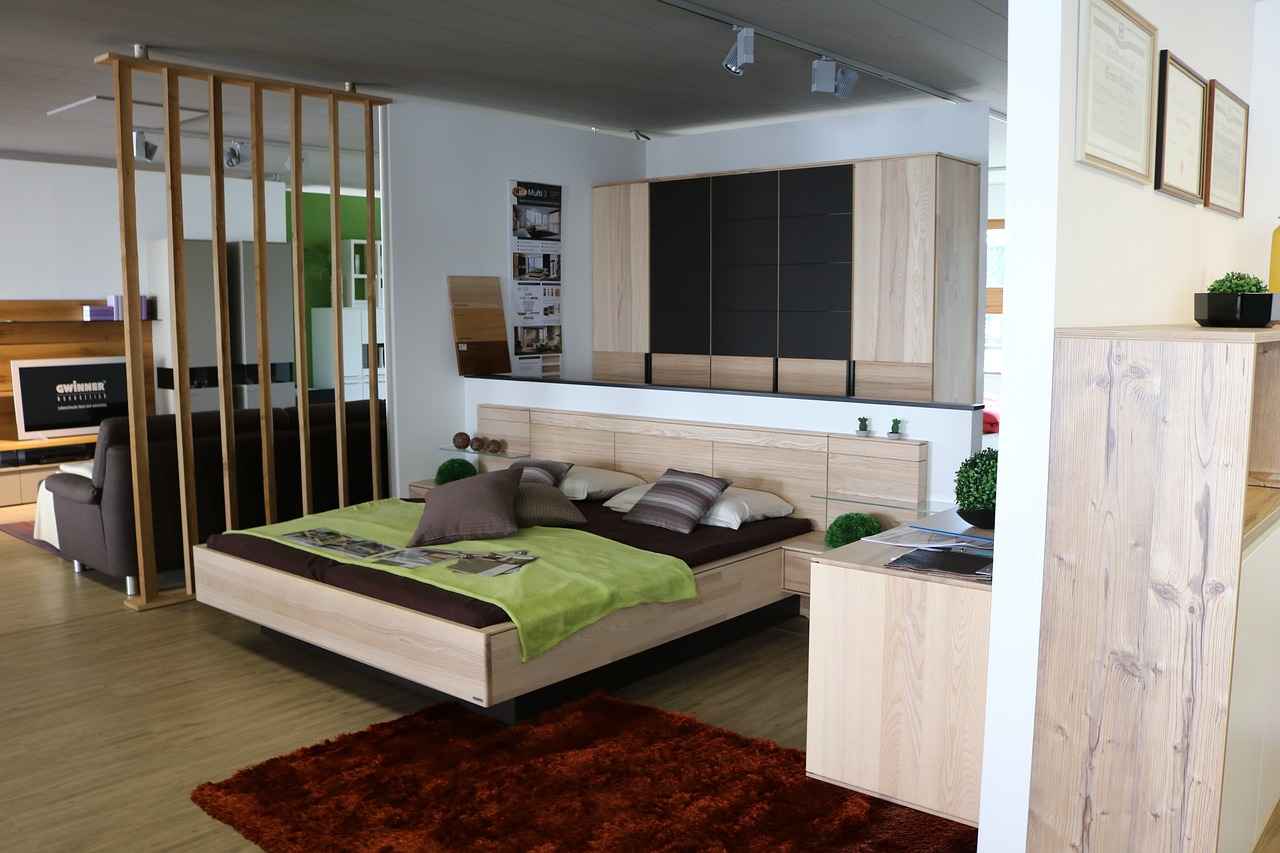
What Are Eco-Friendly Room Dividers?
Eco-friendly room dividers are innovative solutions that cater to the growing demand for sustainable living. These partitions are crafted from sustainable or recycled materials, providing a way to separate spaces without sacrificing style or function. As more individuals seek to minimize their environmental impact, eco-friendly room dividers have become a popular choice for both residential and commercial spaces.
Choosing eco-friendly room dividers comes with numerous advantages. Here are some key benefits:
- Environmental Responsibility: By utilizing recycled materials, these dividers help reduce waste and promote sustainability.
- Unique Aesthetics: Eco-friendly dividers often have a distinct character, adding charm and personality to any room.
- Versatile Functionality: They can serve multiple purposes, from providing privacy to enhancing the overall design of a space.
- Cost-Effective: Many recycled materials can be sourced at a lower cost, making these dividers an economical choice.
Eco-friendly room dividers are made through various methods, depending on the materials used. Common materials include:
- Reclaimed Wood: Old furniture or building materials can be repurposed into stylish dividers.
- Recycled Metal: Metals can be reshaped and painted to create modern and sleek designs.
- Fabric Scraps: Old textiles can be sewn together to form colorful and flexible partitions.
When selecting materials for eco-friendly room dividers, consider the following options:
- Bamboo: A fast-growing plant that is both sustainable and durable, making it an ideal choice for dividers.
- Cardboard: Surprisingly sturdy when layered, cardboard can be transformed into creative dividers.
- Glass: Recycled glass can provide a modern touch while allowing light to flow through.
Integrating eco-friendly room dividers into your space can be both fun and rewarding. Here are some practical tips:
- Consider Your Space: Evaluate the area where you want to install the divider. Measure the dimensions to ensure a perfect fit.
- Choose a Theme: Select a style that complements your existing decor, whether it’s rustic, modern, or bohemian.
- Incorporate Lighting: Use light to enhance the beauty of your dividers, especially if they are made from materials like glass or fabric.
In conclusion, eco-friendly room dividers represent a harmonious blend of sustainability and style. By choosing materials that are both responsible and aesthetically pleasing, you can create spaces that are not only functional but also contribute to a healthier planet. Whether you opt for repurposed wood, fabric, or even plants, the possibilities are endless. Embrace the eco-friendly movement and transform your living spaces with these innovative solutions.
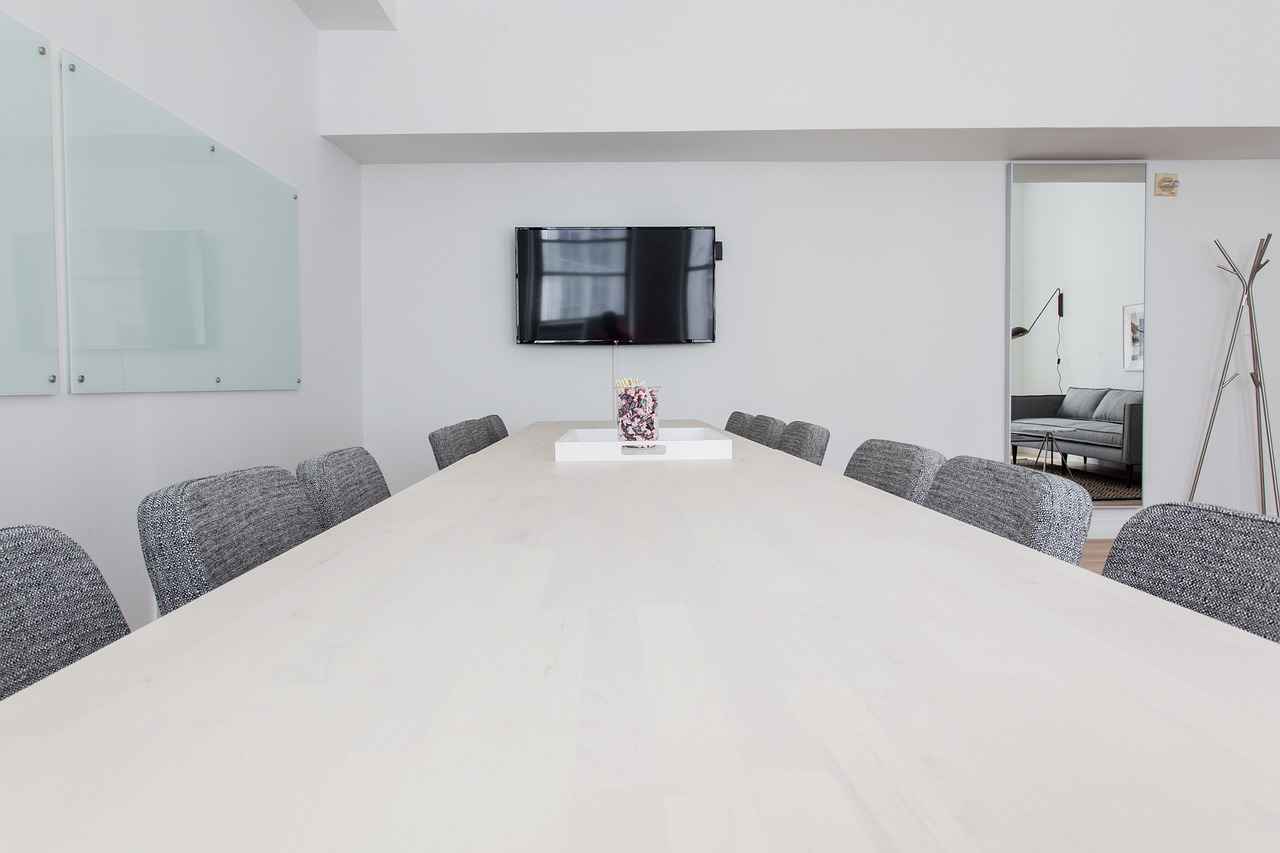
Why Choose Recycled Materials for Room Dividers?
When it comes to creating functional and aesthetically pleasing spaces, room dividers play a crucial role. Not only do they help define areas within a room, but they also contribute to the overall design and ambiance. One of the most effective ways to achieve this is by using recycled materials. This approach not only reduces waste but also promotes sustainability, making it a responsible choice for environmentally conscious individuals.
Using recycled materials for room dividers offers numerous advantages that extend beyond mere aesthetics. Here are some compelling reasons to consider:
- Environmental Impact: By utilizing materials that would otherwise end up in landfills, you are actively participating in waste reduction. This choice contributes to a greener planet by minimizing the demand for new resources.
- Unique Aesthetic: Recycled materials often come with their own history and character, allowing you to create a one-of-a-kind look in your space. Whether it’s reclaimed wood, vintage doors, or repurposed fabrics, each piece tells a story.
- Cost-Effective: Many recycled materials are available at a lower cost compared to new items. This affordability allows you to achieve a stylish look without breaking the bank.
- Customization Opportunities: Recycled materials can be easily modified or painted to suit your design preferences. This flexibility enables you to personalize your room divider to match your existing decor.
- Support for Local Businesses: Sourcing recycled materials often leads to supporting local artisans and businesses that specialize in sustainable practices.
Moreover, using recycled materials for your room dividers can create a conversation starter among guests, showcasing your commitment to sustainability and creativity. This not only enhances the aesthetic appeal of your home but also aligns with a growing trend towards eco-friendly living.
To illustrate the benefits of using recycled materials, here are some practical examples:
- Pallets: Wooden pallets can be transformed into stylish and functional room dividers. With a bit of sanding and painting, they can serve as rustic partitions that add warmth to your space.
- Old Doors: Repurposing old doors can create striking dividers that add character. You can leave them as-is for a vintage look or paint them to match your decor.
- Fabric Panels: Using recycled fabrics allows for a soft and flexible divider option. You can create curtains or fabric panels that can be easily moved or adjusted.
- Plant Walls: Integrating plants into your room dividers not only divides spaces but also improves air quality. Using recycled materials to create a frame for your plants adds a touch of nature to your home.
In conclusion, choosing recycled materials for room dividers is not just an eco-conscious choice; it also enhances the character and uniqueness of your living space. By reducing waste and promoting sustainability, you contribute positively to the environment while enjoying the aesthetic benefits of your creative endeavors. With various options available, you can easily find a solution that fits your style and budget, making your home both beautiful and sustainable.
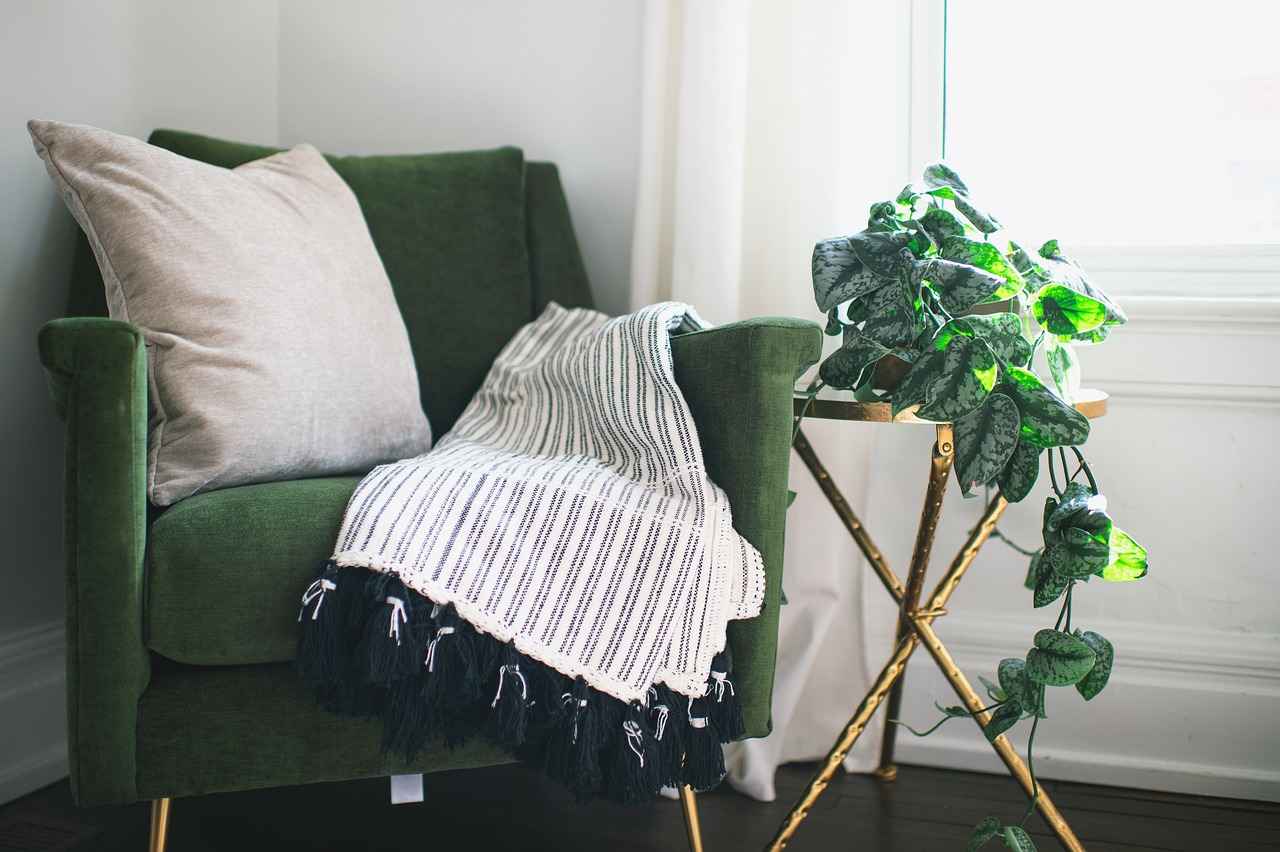
Creative Ideas for Using Pallets as Room Dividers
When it comes to home decor, creativity and functionality often go hand in hand. One of the most innovative ways to separate spaces in your home is by using wooden pallets. These versatile structures can be transformed into stylish room dividers that not only enhance your interior design but also promote sustainability. Below, we explore some creative ideas for using pallets as room dividers.
Pallets are an excellent choice for room dividers due to their affordability and availability. They are often discarded after transporting goods, making them a sustainable option for eco-conscious homeowners. By repurposing pallets, you can reduce waste while adding a unique touch to your space.
- Cleaning: Start by thoroughly cleaning the pallets to remove any dirt, dust, or chemicals.
- Sanding: Sand down rough edges to prevent splinters and ensure a smooth finish.
- Painting or Staining: Consider painting or staining the pallets to match your decor style.
Here are some inspiring ways to use pallets as room dividers:
- Vertical Garden: Attach pots to the pallet to create a living wall that separates spaces while adding greenery.
- Rustic Shelving: Use pallets to create shelves that can store books or decorative items, effectively dividing a room.
- Artistic Displays: Hang artwork or photographs on the pallet to personalize your space while serving as a divider.
To enhance the ambiance of your room divider, consider integrating lighting. String lights can be wrapped around the pallets, creating a warm and inviting atmosphere. Additionally, you can attach small lamps to the pallets for functional lighting.
Think about incorporating built-in features into your pallet dividers:
- Storage Solutions: Use the space behind the pallets to create hidden storage for items like blankets or books.
- Seating Areas: Transform your pallet divider into a bench by adding cushions, providing both separation and extra seating.
To keep your pallet dividers looking fresh, regular maintenance is essential. Check for any signs of wear and tear, and reapply paint or stain as needed. This will ensure that your creative room divider remains a stylish feature in your home.
In conclusion, repurposing wooden pallets as room dividers is a fantastic way to achieve both style and functionality in your living space. With a bit of creativity and effort, you can transform ordinary pallets into extraordinary design elements that reflect your unique taste while being environmentally friendly.
How to Prepare Pallets for DIY Projects
When considering the use of pallets for DIY projects, particularly as room dividers, proper preparation is essential to ensure both safety and aesthetic appeal. Below, we outline the key steps involved in preparing pallets for your creative endeavors.
Properly preparing pallets is crucial for several reasons. First, it ensures that the pallets are safe for use, eliminating any potential hazards such as splinters or harmful chemicals. Second, a well-prepared pallet enhances the overall visual appeal of your project, transforming a simple wooden structure into an attractive design element in your home.
- Cleaning: Start by thoroughly cleaning the pallets. Remove any dirt, dust, or debris using a stiff brush and a mixture of soap and water. For tougher stains, a pressure washer can be effective. Ensure the pallets are completely dry before moving to the next step.
- Sanding: After cleaning, sand the pallets to smooth out rough edges and surfaces. This step is crucial to prevent splinters and to create a more polished look. Use medium-grit sandpaper followed by fine-grit sandpaper for the best finish.
- Inspecting: Carefully inspect the pallets for any signs of damage, such as cracks or broken slats. Replace any damaged pieces to maintain structural integrity. Additionally, check for any markings that indicate the pallets have been treated with chemicals, as these can be harmful.
- Painting or Staining: If desired, apply a coat of paint or wood stain to enhance the aesthetic appeal of the pallets. Choose eco-friendly paints or stains to maintain the sustainability of your project. This step also provides an additional layer of protection against moisture and wear.
- Sealing: Consider sealing the pallets with a clear sealant to protect the wood from moisture and prolong its lifespan. This is especially important if the pallets will be used in areas with high humidity.
While preparing pallets, it’s important to take certain safety precautions:
- Always wear protective gear, including gloves and a mask, to avoid inhaling dust and to protect your hands from splinters.
- Work in a well-ventilated area, especially when using paints or sealants to minimize exposure to fumes.
- Handle pallets carefully to avoid injury from sharp edges or heavy lifting.
For the best results, keep the following tips in mind:
- Choose pallets that are in good condition and made from high-quality wood.
- Consider the final look you want to achieve. Experiment with different colors and finishes to find what best suits your space.
- Plan your design before starting the preparation process, as this will guide your choices in cleaning, sanding, and finishing.
By following these steps and tips, you can effectively prepare pallets for your DIY projects, ensuring they are both safe and visually appealing. This preparation not only contributes to the overall quality of your room divider but also enhances the sustainability of your home decor.
Designing with Pallets: Tips and Tricks
When it comes to home decor, incorporating pallets can add a unique touch that combines rustic charm with modern aesthetics. Whether you’re looking to create a vertical garden or stylish shelving units, pallets serve as a versatile material that can transform your space. Below are some innovative ideas to inspire your next DIY project.
Pallets are not only affordable and widely available, but they also offer an eco-friendly solution for home decor. By repurposing pallets, you can reduce waste while adding character to your home. Their sturdy structure allows for various creative applications, making them perfect for both functional and decorative uses.
One of the most popular uses for pallets is to create stunning vertical gardens. This design not only saves space but also brings a touch of nature indoors. Here’s how to get started:
- Choose the Right Pallet: Look for pallets that are clean and free of chemicals. Heat-treated pallets are a safer option for indoor use.
- Prepare the Pallet: Clean and sand the pallet to remove any rough edges. You may also want to paint or stain it to match your decor.
- Add Planters: Attach small pots or create pockets using landscape fabric to hold soil and plants. Herbs and succulents are excellent choices for vertical gardens.
Pallets can easily be transformed into shelving units that add both storage and style to your home. Follow these steps to create your own:
- Decide on the Location: Determine where you want to place your shelving unit. Consider the weight of items you’ll store.
- Disassemble the Pallet: Carefully take apart the pallet to use individual boards for your shelves.
- Assemble Your Shelves: Use brackets or additional wood to create a stable structure. Sand and finish the wood for a polished look.
Pallets can also be used to create unique furniture pieces such as coffee tables, benches, or even bed frames. Here are some tips:
- Choose a Design: Decide on the type of furniture you want to create. A simple coffee table can be made by stacking pallets and adding a glass top.
- Stabilize Your Furniture: Ensure that all pieces are securely fastened together to prevent wobbling.
- Finish the Surface: Apply a coat of varnish or paint to protect the wood and enhance its appearance.
Beyond furniture and gardens, pallets can be used to create decorative items such as wall art or photo frames. Here are some ideas:
- Wall Art: Cut pallet wood into various shapes to create a rustic art piece. You can paint it or leave it natural for a more organic feel.
- Photo Frames: Use pallet wood to craft frames that can hold your cherished memories, adding a personal touch to your decor.
By exploring these creative ideas, you can effectively incorporate pallets into your home decor, achieving a rustic yet chic look. Whether you opt for vertical gardens, shelving units, or unique furniture pieces, pallets offer endless possibilities for customization and style.
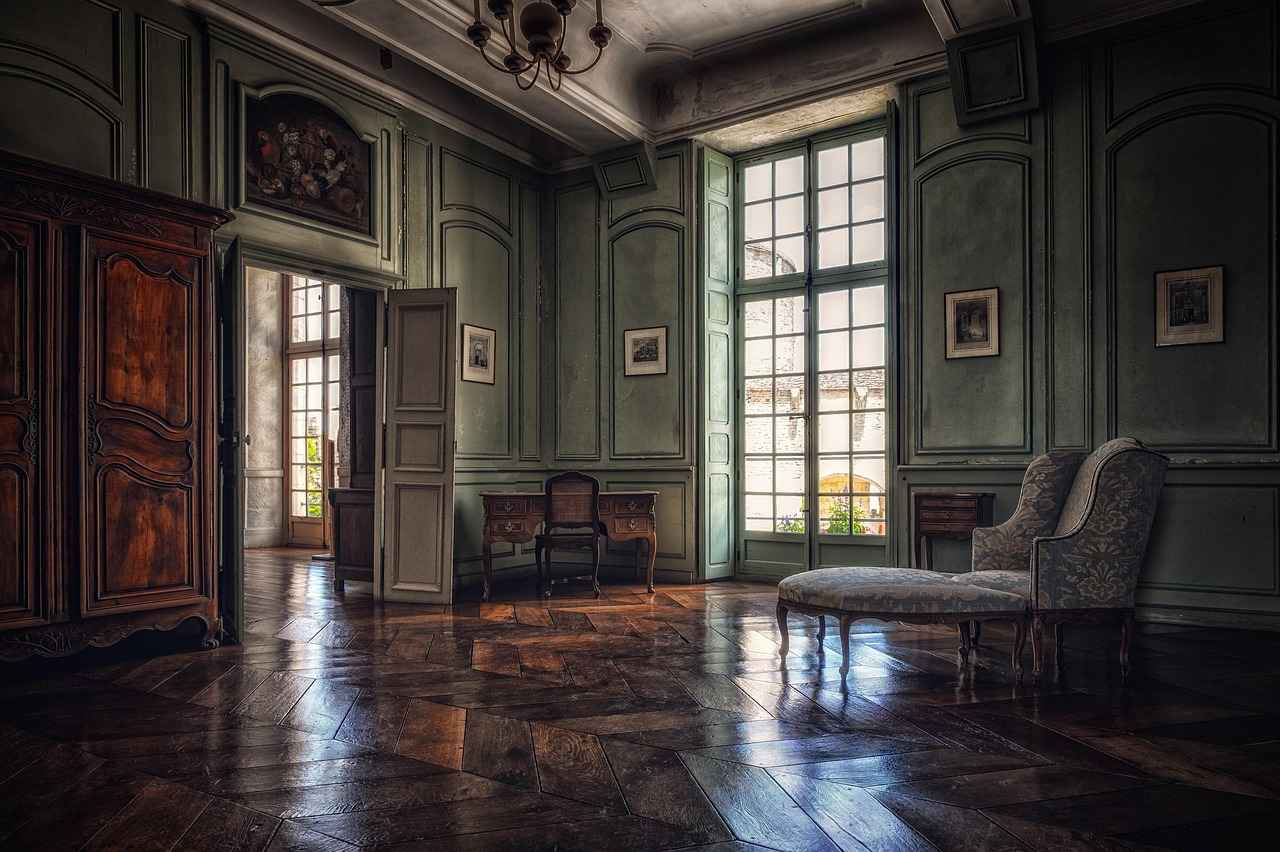
Using Old Doors to Create Unique Dividers
Repurposing old doors as room dividers is not just an innovative way to enhance your living space; it also adds a touch of character and charm to your home. By creatively utilizing doors, you can create functional dividers that reflect your personal style while promoting a sustainable lifestyle. In this section, we will explore various ways to transform old doors into unique room dividers that not only serve a purpose but also contribute to an eco-friendly approach.
Old doors are often rich in history and character, making them an excellent choice for room dividers. They offer a unique aesthetic that can’t be replicated with modern materials. By choosing to repurpose doors, you are not only giving them a new life but also reducing waste and promoting sustainability. Here are some compelling reasons to consider:
- Unique Aesthetic: Each door has its own story, adding a distinctive look to your space.
- Durability: Old wooden doors are often sturdier than contemporary alternatives.
- Cost-Effective: Sourcing old doors can be more affordable than purchasing new materials.
When selecting doors for your room divider project, consider the following factors:
- Size: Ensure the door fits well in the intended space without overwhelming it.
- Style: Look for doors that match your existing decor, whether it’s rustic, modern, or vintage.
- Material: Solid wood doors provide better stability and durability compared to hollow-core doors.
There are numerous creative ideas for transforming old doors into stunning room dividers:
- Hinged Dividers: Use multiple doors connected with hinges to create a flexible divider that can be adjusted as needed.
- Sliding Door Dividers: Mount a door on a track for a stylish sliding divider that saves space.
- Open Frame Dividers: Remove the door panels and use the frame to create a more open feel while still providing separation.
Once you have selected and prepared your doors, adding the right finishing touches can elevate their appearance:
- Paint: A fresh coat of paint can completely transform the look of an old door. Consider bold colors for a statement piece or soft hues for a subtle touch.
- Hardware: Adding unique knobs or handles can enhance the door’s character.
- Decorative Elements: Consider adding mirrors, art, or shelves to make the divider even more functional.
Installing your repurposed door dividers can be straightforward. Here are some tips:
- Secure Base: Ensure the base is stable, especially for free-standing dividers.
- Mounting: For sliding doors, install a track securely to the ceiling or wall.
- Adjustability: Consider using adjustable hinges for flexibility in positioning.
Repurposing old doors into room dividers not only enhances your living space but also promotes a sustainable lifestyle. By choosing unique doors and applying creative finishing touches, you can create a functional and stylish divider that reflects your personality while being environmentally conscious.
Choosing the Right Doors for Your Project
When it comes to enhancing your living space, choosing the right doors is a crucial step in your design journey. The doors you select not only serve as functional elements but also contribute significantly to the overall aesthetic of your home. Let’s delve into the essential factors to consider when selecting doors for your project.
Size is one of the first considerations when selecting doors. Measure the height and width of the doorframe accurately to ensure a perfect fit. Standard door sizes typically range from 28 to 36 inches in width and 80 inches in height. However, custom sizes are available for unique spaces. Consider the following:
- Proportion: Ensure the door size complements the scale of the room.
- Accessibility: Wider doors may be necessary for wheelchair access or heavy furniture movement.
The style of the door plays a pivotal role in defining the character of a room. Here are some popular styles to consider:
- Traditional: Classic wooden doors with intricate designs.
- Modern: Sleek, minimalist designs often made of glass or metal.
- Rustic: Reclaimed wood doors that add warmth and charm.
Think about the existing decor in your home. For instance, if you have a modern aesthetic, a glass door may enhance the open feel of your space, while a solid wood door may suit a traditional setting better.
The material of the door impacts not only its appearance but also its durability and maintenance. Common materials include:
- Wood: Offers natural beauty and insulation but requires regular maintenance.
- Steel: Provides strength and security but can be prone to rust.
- Fiberglass: Resistant to dents and scratches, making it a low-maintenance option.
Assess your lifestyle and the environment of your home. For instance, if you live in a humid area, fiberglass doors may be more suitable than wooden ones.
Functionality is key when selecting doors. Consider the following:
- Hinges: Ensure they are sturdy and suitable for the door weight.
- Locks: Choose locks that provide adequate security for your needs.
- Soundproofing: If privacy is a concern, look for doors that offer sound insulation.
Once you’ve selected the right door, consider adding finishing touches to elevate its appearance. This can include:
- Paint or Stain: A fresh coat can breathe new life into an old door.
- Hardware: Unique handles and knobs can add personality.
- Decorative Elements: Consider adding glass panels or carvings for added flair.
In conclusion, choosing the right doors for your project involves careful consideration of size, style, and material. By taking the time to assess your needs and preferences, you can select doors that not only enhance the functionality of your space but also reflect your personal style. Remember, the right doors can transform not just a room, but the entire ambiance of your home.
Finishing Touches for Repurposed Doors
When it comes to transforming your living space, few methods are as impactful as repurposing old doors into stylish room dividers. This eco-friendly approach not only promotes sustainability but also adds a unique charm to your home. Finishing touches play a crucial role in elevating the aesthetic appeal of these dividers, allowing you to reflect your personal style while enhancing functionality.
The finishing touches you apply to repurposed doors can significantly alter their appearance and functionality. By adding paint, hardware, or decorative elements, you can transform a simple door into a stunning focal point in any room. These enhancements not only help in personalizing the space but also ensure that the dividers blend seamlessly with your existing decor.
Paint is one of the most effective ways to rejuvenate old doors. Opt for eco-friendly paints that are low in volatile organic compounds (VOCs) to maintain a healthy indoor environment. Consider the following:
- Color Selection: Choose colors that complement your existing decor. Bold colors can create a statement, while muted tones can offer a subtle touch.
- Finish Type: Matte finishes provide a modern look, while glossy finishes can add elegance and make cleaning easier.
Adding hardware such as knobs, handles, or hinges can enhance both the functionality and aesthetic of your repurposed doors. Here are some ideas:
- Unique Handles: Look for vintage or artisan handles that can serve as conversation starters.
- Sliding Mechanisms: Consider installing a sliding door system for a modern touch and space-saving solution.
Beyond paint and hardware, decorative elements can truly bring your repurposed doors to life. Consider these options:
- Stencils and Decals: Use stencils to add intricate designs or quotes that resonate with your style.
- Fabric Accents: Attach fabric panels or curtains to the door for a softer, more inviting look.
To ensure that your repurposed door dividers fit harmoniously within your space, consider the surrounding decor. You can:
- Match Colors: Use similar color palettes in your furniture and accessories to create a cohesive look.
- Incorporate Similar Textures: If your door is rustic, consider adding wooden elements in your decor to tie everything together.
To keep your repurposed doors looking stunning, regular maintenance is essential. Here are some tips:
- Regular Cleaning: Dust and clean your doors periodically to maintain their appearance.
- Touch-ups: Keep paint and hardware in good condition by performing touch-ups as needed.
In conclusion, the finishing touches you apply to repurposed doors can significantly enhance their charm and functionality. By choosing the right paint, incorporating stylish hardware, and adding decorative elements, you can create stunning room dividers that reflect your personal style while being eco-friendly. Embrace your creativity and enjoy the transformation of your living space!
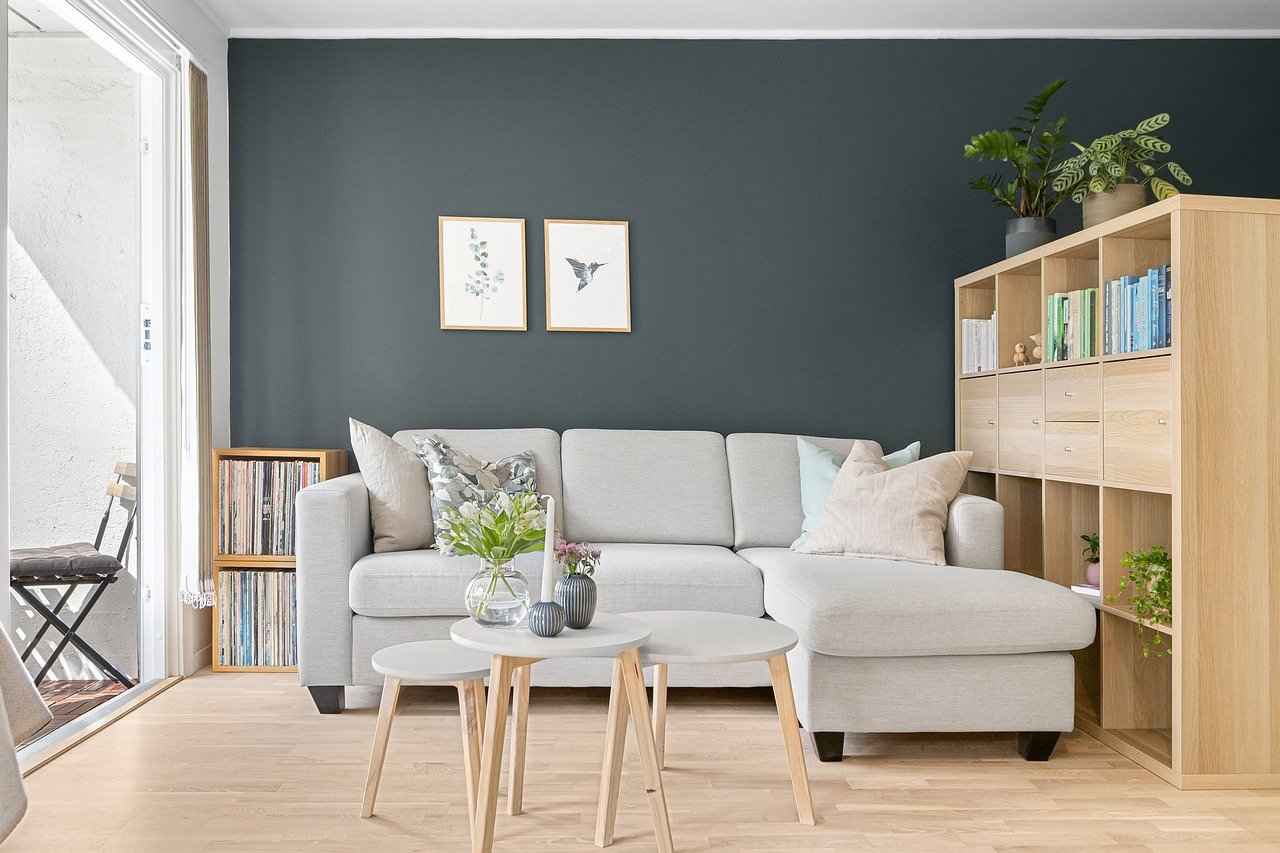
Transforming Fabrics into Stylish Room Dividers
When it comes to creating distinct spaces within a room, fabric dividers offer a versatile and stylish solution. Utilizing recycled fabrics not only promotes sustainability but also allows for endless design possibilities. This guide explores how to transform fabrics into beautiful room dividers, enhancing your home while being environmentally conscious.
Fabric is an excellent choice for room dividers due to its flexibility and lightweight nature. Unlike traditional wooden or metal dividers, fabric can easily be moved or adjusted to fit your needs. Additionally, fabrics come in a variety of colors, patterns, and textures, allowing you to customize your space effortlessly.
- Eco-Friendly: Using recycled materials reduces waste and minimizes your carbon footprint.
- Unique Aesthetics: Each piece of recycled fabric carries its own history, adding character and uniqueness to your decor.
- Cost-Effective: Sourcing recycled fabrics can be more affordable than purchasing new materials.
When selecting fabrics for your room divider, opt for organic cotton, reclaimed textiles, or linen. These materials are not only sustainable but also durable. Look for fabrics with low environmental impact, and consider visiting local thrift stores or fabric swaps to find unique pieces.
There are several innovative ways to hang and style fabric dividers:
- Curtain Rods: Install a curtain rod to easily slide fabric open or closed, allowing for flexibility in your space.
- Tension Rods: Perfect for smaller areas, tension rods can be placed between walls or in corners, providing a simple solution.
- DIY Frames: Create a frame using wood or PVC pipes to stretch fabric across, giving it a structured appearance.
Consider these creative design ideas when planning your fabric divider:
- Layered Textures: Combine different fabrics for a rich, layered look. Use sheer materials for a light feel, paired with heavier fabrics for privacy.
- Patterns and Colors: Choose bold patterns or colors to make a statement or soft tones for a calming effect.
- Artistic Displays: Frame fabric in a gallery style by attaching pieces to a wooden frame, creating an artistic focal point.
To keep your fabric dividers looking fresh:
- Regular Cleaning: Depending on the fabric, regular vacuuming or spot cleaning may be necessary to maintain appearance.
- Sun Protection: If your divider is exposed to sunlight, consider using UV-protective sprays to prevent fading.
- Storage Tips: If you need to take down your dividers, store them in a cool, dry place to avoid mildew and damage.
Incorporating fabric dividers into your home is a simple yet impactful way to create separate spaces. By utilizing recycled fabrics, you not only enhance your living environment but also contribute to a more sustainable future. With the right techniques and design ideas, your fabric dividers can become a beautiful focal point in your home.
Choosing Eco-Friendly Fabrics
When it comes to creating stylish and functional room dividers, is a crucial step. Not only does this decision help in minimizing environmental impact, but it also enhances the aesthetic appeal of your space. By opting for sustainable materials, you can create unique dividers that resonate with your personal style while contributing to a healthier planet.
Using sustainable fabrics such as organic cotton, hemp, or recycled polyester ensures that your room divider is not only visually appealing but also environmentally responsible. These materials are produced with less water, fewer chemicals, and reduced carbon footprints compared to conventional fabrics. This choice supports eco-friendly practices and promotes a more sustainable textile industry.
- Organic Cotton: Grown without synthetic pesticides or fertilizers, organic cotton is safer for the environment and your home.
- Repurposed Textiles: Utilizing leftover fabric from other projects reduces waste and gives a second life to materials that would otherwise end up in landfills.
- Durability: Many sustainable fabrics are known for their strength and longevity, making them ideal for room dividers that need to withstand wear and tear.
When choosing fabric for your room divider, consider the following factors:
- Texture and Weight: Heavier fabrics provide better privacy, while lighter fabrics can create a more airy feel.
- Color and Pattern: Select colors and patterns that complement your existing decor and create the desired mood in your space.
- Maintenance: Consider how easy it is to clean the fabric. Some eco-friendly materials are machine washable, while others may require special care.
Once you have selected your sustainable fabric, there are numerous creative ways to use it for room dividers:
- Fabric Panels: Create panels that can be hung from the ceiling or mounted on walls for a stylish and functional divider.
- DIY Curtains: Use your chosen fabric to make curtains that can be easily opened or closed, providing flexibility in space management.
- Quilted Dividers: Combine various eco-friendly fabrics to create a quilted room divider that adds warmth and texture to your space.
To effectively use fabric as a room divider, consider these hanging techniques:
- Curtain Rods: Install curtain rods to easily slide the fabric open and closed, allowing for versatile space usage.
- Tension Rods: Tension rods can be used in smaller spaces where traditional rods may not fit, providing a secure hold without drilling.
- DIY Frames: Construct a frame using wood or metal to create a freestanding fabric divider that can be moved as needed.
In conclusion, selecting eco-friendly fabrics like organic cotton and repurposed textiles is a fantastic way to create stylish room dividers that are both functional and sustainable. By considering the benefits, selecting the right materials, and employing creative techniques, you can enhance your living space while making a positive impact on the environment.
Techniques for Hanging Fabric Dividers
When it comes to creating stylish and functional room dividers, hanging fabric dividers are an excellent choice. They offer flexibility in design, ease of installation, and the ability to change the look of a room quickly. In this section, we will explore various , ensuring you can achieve the desired aesthetic and functionality for your space.
Choosing the right method to hang your fabric dividers can significantly impact their appearance and usability. Below are some popular techniques:
- Curtain Rods: One of the most common methods, curtain rods provide a classic look and allow for easy sliding of fabric. You can choose decorative rods that match your decor style.
- Tension Wires: For a minimalist approach, tension wires can be stretched between two walls or posts. This method is ideal for lightweight fabrics and creates a sleek, modern look.
- DIY Frames: Constructing a simple frame from wood or metal allows you to create a custom-sized divider. You can attach fabric to the frame using staples or fabric glue, giving you complete control over the design.
- Clip Rings: These allow for easy attachment and removal of fabric from curtain rods. They can add a decorative touch and make it simple to change fabrics according to seasons or moods.
- Magnetic Strips: If you prefer a non-invasive option, using magnetic strips can be effective. Attach one side to the wall and the other to the fabric, allowing for easy installation and removal.
When selecting a method for hanging your fabric dividers, consider the following:
- Weight of the Fabric: Heavier fabrics may require sturdier hardware, such as curtain rods or frames, while lightweight fabrics can work well with tension wires.
- Space Constraints: If you have limited space, tension wires or clip rings may be more suitable as they require less room than traditional rods.
- Desired Movement: If you want the ability to easily open or close the divider, curtain rods or clip rings are ideal. For a more permanent look, frames may be better.
Absolutely! Customizing your fabric dividers can enhance the overall aesthetic of your space. Here are some ideas:
- Fabric Choices: Opt for recycled fabrics or eco-friendly materials to align with sustainable living principles.
- Patterns and Colors: Choose fabrics that complement your existing decor or add a pop of color to create a focal point.
- Layering Fabrics: For added texture and visual interest, consider layering different fabrics or using sheer materials for a softer look.
Hanging fabric dividers offer numerous advantages:
- Flexibility: Easily change the fabric or style as your tastes evolve.
- Lightweight: Unlike traditional dividers, fabric options are generally lighter and easier to handle.
- Sound Absorption: Fabrics can help absorb sound, providing a quieter environment.
In conclusion, with the right techniques and materials, hanging fabric dividers can transform your space into a stylish and functional area. Whether you opt for curtain rods, tension wires, or DIY frames, the possibilities are endless. By customizing your dividers, you can create a unique look that reflects your personality while maintaining an eco-friendly approach.
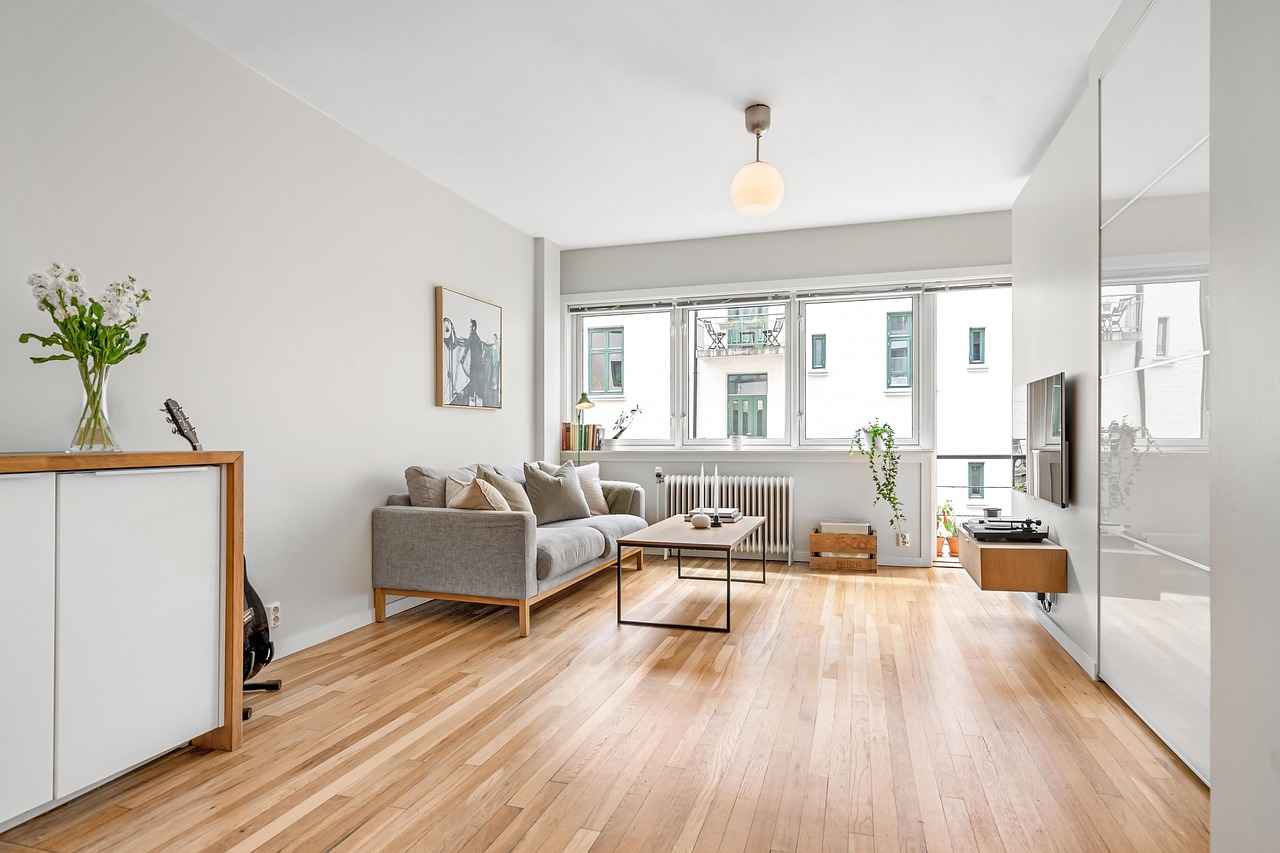
Incorporating Plants into Room Dividers
Incorporating plants into your home decor not only enhances aesthetic appeal but also promotes a healthier living environment. Plants can serve as natural room dividers, providing privacy while improving air quality. This article explores how to create green partitions using recycled materials and a variety of indoor plants.
Using plants as room dividers offers several benefits. They create a sense of separation between spaces without the heaviness of traditional dividers. Additionally, plants can:
- Improve air quality by filtering toxins and releasing oxygen.
- Enhance mood by adding a touch of nature to your interior.
- Boost creativity and productivity, making them ideal for workspaces.
When selecting plants for your green partitions, consider the following factors:
- Light Requirements: Ensure the plants you choose can thrive in the lighting conditions of your space. For low-light areas, consider plants like snake plants or pothos.
- Maintenance Level: Opt for low-maintenance plants if you prefer a hassle-free option. ZZ plants and peace lilies are great choices.
- Size and Growth Habit: Select plants that will grow to the desired height and spread. Taller plants like fiddle leaf figs can create a more substantial division.
A plant wall can be an eye-catching way to separate spaces while adding a lush, green touch. Here’s how to create one using recycled materials:
1. Gather materials such as old pallets, crates, or wooden frames.2. Secure the structure vertically against a wall.3. Fill with potted plants or create a vertical garden using planting pockets.4. Ensure proper irrigation and drainage to keep the plants healthy.
By using recycled materials, you not only save money but also contribute to sustainability.
Aside from plant walls, there are various creative ways to incorporate plants as dividers:
- Hanging Planters: Use macramé hangers to suspend plants from the ceiling, creating a floating divider effect.
- Tiered Plant Stands: Arrange plants on multi-level stands for a dynamic display that separates areas while maximizing space.
- Glass Terrariums: Use clear glass containers filled with plants to create a modern, airy divider that allows light to pass through.
To ensure your plant dividers thrive, regular maintenance is key. Here are some tips:
- Watering: Check the soil moisture and water accordingly, avoiding overwatering.
- Fertilizing: Use organic fertilizers to promote healthy growth.
- Pruning: Trim dead leaves and branches to encourage new growth and maintain appearance.
Incorporating plants into your room dividers not only adds beauty and character to your space but also fosters a healthier environment. With a little creativity and the right materials, you can transform your home into a green oasis.
Choosing the Right Plants for Indoor Dividers
Creating a serene and aesthetically pleasing indoor space can be easily achieved by incorporating plants as natural dividers. However, is essential to ensure they thrive in your environment while enhancing the overall ambiance. This guide will delve into the best plant options, their maintenance needs, and how they can elevate your living space.
Indoor plants not only offer visual appeal but also improve air quality and create a calming atmosphere. They can act as natural barriers, delineating spaces without the need for traditional walls. This approach allows for an open yet defined layout, making it ideal for small apartments or shared spaces.
- Snake Plant: Known for its resilience, the snake plant thrives in low light and requires minimal watering. Its tall, upright leaves make it an excellent choice for vertical dividers.
- Pothos: This trailing vine is perfect for hanging arrangements. Pothos can tolerate a range of lighting conditions and only needs watering when the soil is dry.
- ZZ Plant: With its glossy leaves, the ZZ plant is not only attractive but also drought-resistant. It can survive in low light and requires little care.
- Spider Plant: Known for its air-purifying qualities, the spider plant produces ‘babies’ that can be propagated easily. It thrives in indirect sunlight and is forgiving if you forget to water it occasionally.
- Peace Lily: This plant is not only beautiful but also effective at filtering toxins from the air. It prefers low to medium light and needs watering about once a week.
When choosing plants for your indoor dividers, consider the following factors:
- Light Conditions: Assess the natural light available in your space. Some plants prefer bright, indirect sunlight, while others can thrive in low-light conditions.
- Space Availability: Ensure that the plants you choose fit well within the designated area without overcrowding. Consider their mature size and growth habit.
- Maintenance Needs: Select plants that align with your lifestyle. If you travel frequently or have a busy schedule, opt for low-maintenance varieties.
- Allergies and Pet Safety: If you have pets or allergies, research plant toxicity and choose non-toxic options to ensure safety for all household members.
Once you’ve chosen the right plants, consider how to incorporate them into your space:
- Plant Shelves: Create a tiered shelf to display various plants at different heights, adding depth and visual interest.
- Hanging Planters: Use macramé hangers or wall-mounted planters to suspend plants from the ceiling, creating a floating divider effect.
- Plant Wall: Install a vertical garden using a variety of plants to form a lush green wall that separates spaces while providing a stunning visual impact.
To ensure your indoor plants thrive, follow these maintenance tips:
- Regular Watering: Check the soil moisture regularly and water accordingly. Avoid overwatering, as this can lead to root rot.
- Fertilization: Use a balanced fertilizer during the growing season to promote healthy growth.
- Pruning: Trim dead or yellowing leaves to maintain a tidy appearance and encourage new growth.
By carefully selecting low-maintenance plants and incorporating them thoughtfully into your living space, you can create beautiful indoor dividers that enhance both functionality and aesthetics. These green elements not only beautify your home but also contribute positively to your well-being.
Building a Plant Wall as a Divider
Creating a plant wall as a room divider is an innovative way to enhance your living space while promoting sustainability. This eco-friendly project not only serves as a stunning visual feature but also acts as a natural barrier between different areas, offering both privacy and a touch of nature indoors. In this section, we will explore how to construct a plant wall using recycled materials, the benefits of incorporating plants into your decor, and tips for ensuring your living divider thrives.
A plant wall is an excellent choice for several reasons:
- Visual Appeal: The lush greenery of a plant wall adds a vibrant touch to any room, making it a focal point that draws the eye.
- Improved Air Quality: Plants naturally purify the air, enhancing the overall health of your indoor environment.
- Space Definition: A plant wall effectively separates spaces without the heaviness of traditional walls, making it ideal for smaller areas.
To create a plant wall, you can use various recycled materials:
- Pallets: Wooden pallets are sturdy and easily accessible, making them perfect for supporting a vertical garden.
- Crates: Old wooden crates can be stacked or arranged to create unique shelving for your plants.
- Wire Mesh: Using wire mesh allows for a more flexible arrangement of plants and can be attached to any frame.
Building your plant wall is a straightforward process:
- Choose Your Location: Select a well-lit area in your home that receives adequate sunlight for your chosen plants.
- Prepare the Base: If using pallets, ensure they are clean and free from chemicals. You may want to sand them down to avoid splinters.
- Attach the Plants: Depending on the type of plants, you can use pots, planters, or directly plant them into the structure. Create a mix of trailing and upright plants for visual interest.
- Watering System: Consider incorporating a drip irrigation system or plan for easy access to water your plants regularly.
- Decorate: Enhance your plant wall with decorative elements like fairy lights or small art pieces to add personality.
When selecting plants for your wall, consider the following:
- Low-Maintenance Options: Choose plants that require minimal care, such as succulents, ferns, or pothos, which thrive in various conditions.
- Light Requirements: Ensure the plants you select are suitable for the lighting conditions of your chosen location.
- Growth Patterns: Incorporate a variety of plants with different growth habits to create depth and interest in your design.
To keep your plant wall thriving:
- Regular Watering: Monitor moisture levels and water according to the needs of your plants.
- Fertilizing: Use organic fertilizers to promote healthy growth, particularly during the growing season.
- Pruning: Regularly trim back overgrown plants to maintain the desired shape and encourage bushier growth.
In conclusion, building a plant wall as a divider not only enhances your interior design but also contributes positively to your environment. By using recycled materials and choosing the right plants, you can create a stunning and sustainable feature in your home.
Frequently Asked Questions
- What materials are best for eco-friendly room dividers?
The best materials for eco-friendly room dividers include recycled wood, old doors, and sustainable fabrics. These options not only reduce waste but also add unique character to your space.
- How can I make a room divider from pallets?
You can create a room divider from pallets by cleaning and sanding them, then creatively stacking or arranging them to form a partition. Adding a coat of paint or stain can enhance their appearance and protect the wood.
- Can I use plants as room dividers?
Absolutely! Plants can serve as beautiful natural dividers. Using low-maintenance indoor plants arranged in a vertical garden or on a plant wall can provide privacy while improving air quality.
- What types of old doors work best for dividers?
When selecting old doors for dividers, consider their size, style, and material. Hollow-core doors are lightweight and easy to handle, while solid wood doors offer durability and charm.
- How do I hang fabric dividers?
You can hang fabric dividers using curtain rods, tension wires, or DIY frames. Choose a method that complements your decor and allows for easy opening and closing of the fabric.














